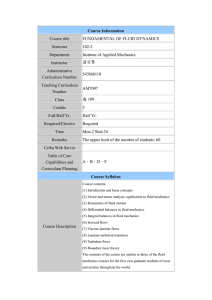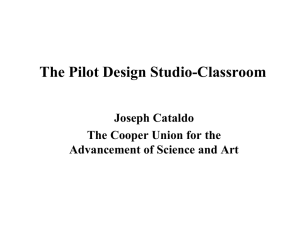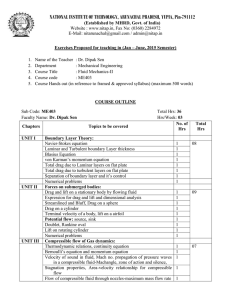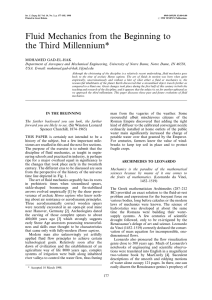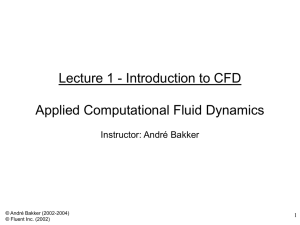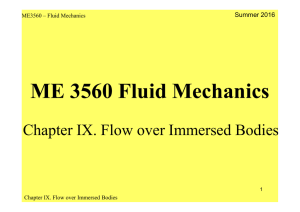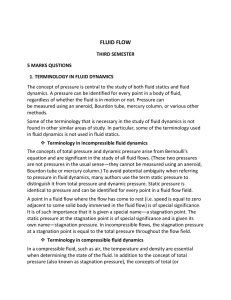3B2.pdf
advertisement
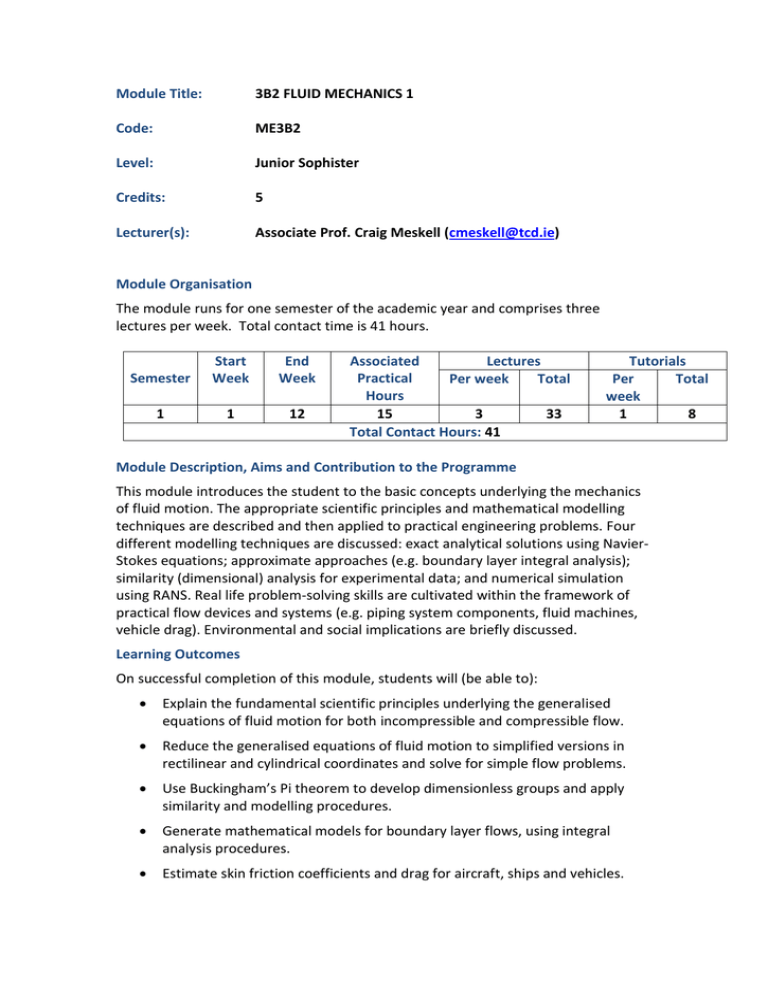
Module Title: 3B2 FLUID MECHANICS 1 Code: ME3B2 Level: Junior Sophister Credits: 5 Lecturer(s): Associate Prof. Craig Meskell (cmeskell@tcd.ie) Module Organisation The module runs for one semester of the academic year and comprises three lectures per week. Total contact time is 41 hours. Semester Start Week End Week 1 1 12 Associated Lectures Practical Per week Total Hours 15 3 33 Total Contact Hours: 41 Tutorials Per Total week 1 8 Module Description, Aims and Contribution to the Programme This module introduces the student to the basic concepts underlying the mechanics of fluid motion. The appropriate scientific principles and mathematical modelling techniques are described and then applied to practical engineering problems. Four different modelling techniques are discussed: exact analytical solutions using NavierStokes equations; approximate approaches (e.g. boundary layer integral analysis); similarity (dimensional) analysis for experimental data; and numerical simulation using RANS. Real life problem-solving skills are cultivated within the framework of practical flow devices and systems (e.g. piping system components, fluid machines, vehicle drag). Environmental and social implications are briefly discussed. Learning Outcomes On successful completion of this module, students will (be able to): Explain the fundamental scientific principles underlying the generalised equations of fluid motion for both incompressible and compressible flow. Reduce the generalised equations of fluid motion to simplified versions in rectilinear and cylindrical coordinates and solve for simple flow problems. Use Buckingham’s Pi theorem to develop dimensionless groups and apply similarity and modelling procedures. Generate mathematical models for boundary layer flows, using integral analysis procedures. Estimate skin friction coefficients and drag for aircraft, ships and vehicles. Discuss the characteristics of laminar and turbulent flow and describe flow visualisation methods and techniques for the measurement of turbulence. Analyse head losses in piping systems and estimate the flow distribution in pipe networks. Calculate the variation in pressure and velocity in a high speed internal gas flow. Execute a numerical simulation of turbulent flow using RANS. Follow formatting requirements typical of grant applications or contract tender process. Module Syllabus Generalised Equations of Motion: Navier Stokes equations; Introduction to turbulence; Introduction to Computational Fluid Mechanics (CFD) Dimensional Analysis: Buckingham Pi theorem, modelling; Boundary Layer Analysis: momentum integral equation, boundary layer profiles and thickness, skin friction coefficient, drag, separation and boundary layer control; Pipe Flow: major losses; abrupt head losses; pipe network analysis Compressible flow: Laval nozzle. Teaching Strategies The module is delivered through a combination of formal podium lectures and problem solving tutorial sessions Assessment Modes There are two components to the modules assessment: Written 2 hour examination at end of year (Students answer any 3 questions out of a choice of 4). This exam represents 80% of the module mark. An individual assignment (in two parts) on the use of CFD, worth 20% of the overall subject marks. Essential required text This is the module textbook. Students are expected to have access to a copy. Fundamentals of fluid mechanics 6e (SI Version) Munson, Young, Okiishi, Huebsch. Publisher: Wiley & Sons, ISBN: 978-0-470-39881-4 Other Relevant Texts The following textbook provide useful addition material: 1) Introduction to Fluid Mechanics 7e Fox, Pritchard, McDonald. ISBN 978-0-47023450-1





